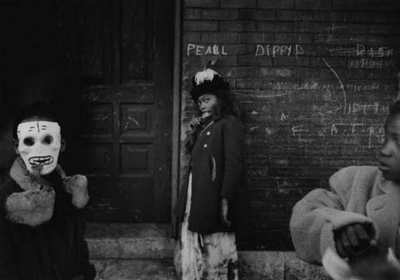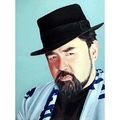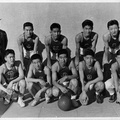The “street photography” of Yasuhiro Ishimoto, all shot in Chicago, is nothing short of spectacular. Though this is only one phase of his work, it may be what he is best remembered for, at least in this country.
Alas, he may not be remembered at all. Mr. Ishimoto was born in California, June 14, 1921, but returned to Japan for schooling with family in 1924. He returned as a teenager after graduating from an agricultural high school and attended Northwestern University in architecture. Shortly thereafter, he was interned at Amache where he began to practice some photography. After the war, Mr. Ishimoto returned to Chicago where he attended the Chicago Institute of Design (CID). During his time at CID his photos were recognized and he won the Moholy-Nagy Prize twice. In 1949 the CID became the Illinois Institute of Technology Institute of Design.
In 1953, Mr. Ishimoto returned to Japan on a commission from the Museum of Modern Art and worked extensively on architectural photography. A few years later, his work was selected by Edward Steichen for his exhibition, Family Of Man. Steichen also selected Ishimoto’s work for a three man show in 1961. At the end of the 1950’s Mr. Ishimoto returned to Chicago, where he lived again through 1961, and this is when he began his extensive work in “street photography”, which culminated in the powerful and striking book of 1969, Chicago, Chicago. He would return to this work again, producing a second version of Chicago, Chicago in 1983. His “vision” of Chicago is an unusual mix of the personal and the compositional: “Moving through Chicago as both citizen and visitor, Yasuhiro Ishimoto was able to create documents that speak eloquently for the culture of the city in the 1950s and 60s. His photographs present highly original visual spaces, which nonetheless suggest the politics, mentality, and history of the city.” (Museum of Contemporary Photography text)
Mr. Ishimoto, however, did not remain a visitor and citizen for long, as he became a naturalized Japanese citizen in 1969. No resources on his life or achievements indicate why he made this decision.
It comes as a mild surprise that neither version of Chicago, Chicago exposes any Asian or Hispanic faces; Ishimoto was, however, willing to travel to, and photograph African Americans and their neighborhoods, and these photos give rise to life and lives that have otherwise been unseen and gone unphotographed, except by African Americans like Ernest Withers, of Memphis. Most striking in many of his faces are the range of expression and life, from joy to apprehension, ennui to rumination. The more compositional photos draw on his architectural background, and his often times, stark and creative use of light and shadow, as all of this work was shot in black and white.
Since his work in Chicago, Ishimoto has traveled, photographed and taught extensively, working in color as well as black and white. His choice in subject matter includes the To-ji temple, color abstractions, Monet’s Water Lilies, and various nature themes. He has received much recognition through awards and shows. He is still alive and working. As recently as 2004, he donated his archive of over 7000 photos to the Kochi Museum of Art in Japan.
Anyone who has seen his work has been moved by the formal and graceful aspects of his compositions, and by his flare for street life, whether it is people, faces, buildings or landscapes. Though he is much better known in Japan than in the United States, everyone can benefit from his art and artistry, especially the urban America, represented in both versions of Chicago, Chicago.
* This article was originally published in the JACLER, JACL Chicago Chapter Newsletter (November 2006).
© 2006 Paul Yamada






